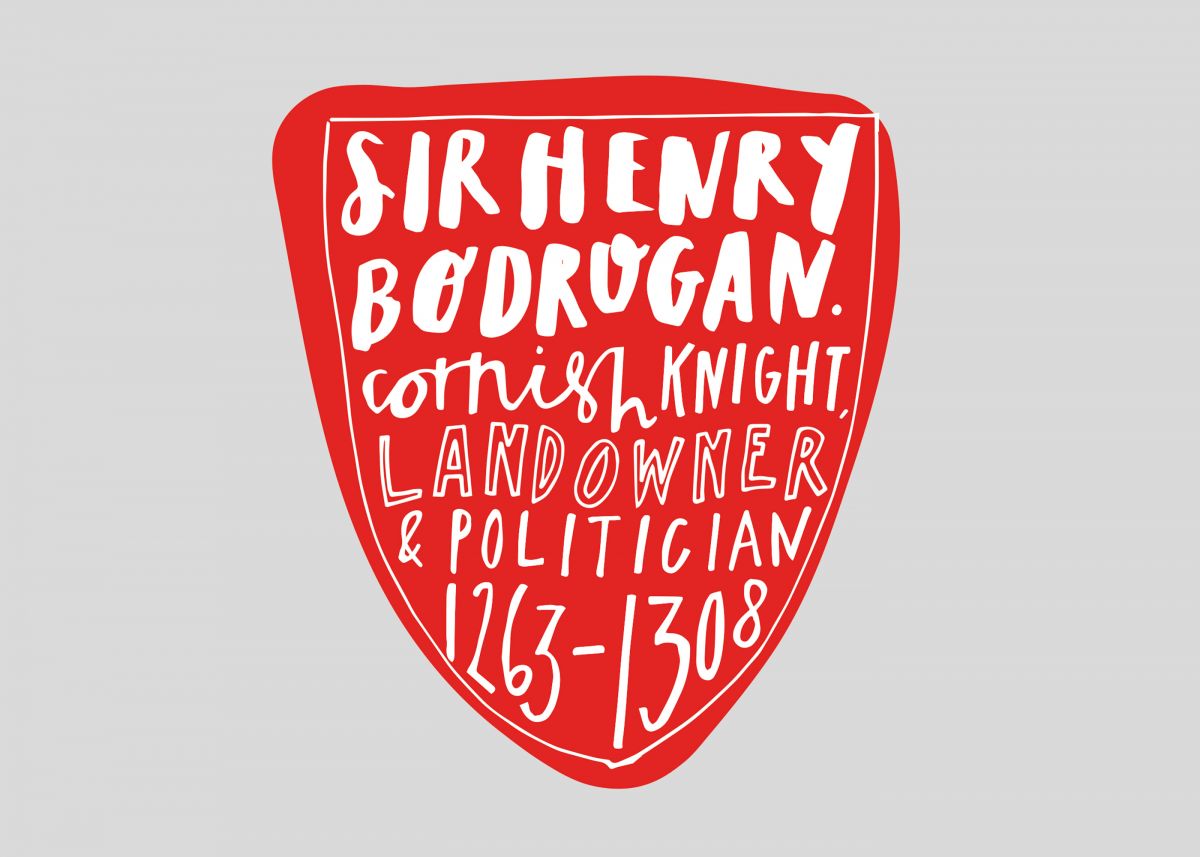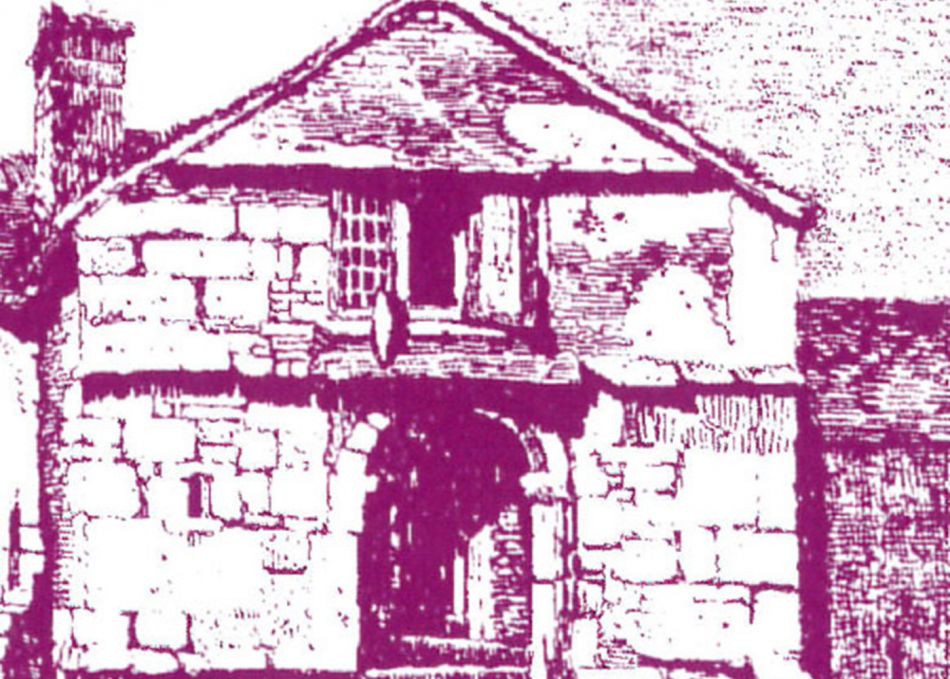The Bodrugans
The Bodrugans were a Cornish family who had lived at Bodrugan, near Gorran Haven, for hundreds of years. They owned lots of land in Cornwall and were very rich and powerful. Members of the family had been MPs and Sheriffs of Cornwall. In 1283, William Bodrugan was Provost (Head) of Glasney College in Penryn.
Sir Henry’s family
Sir Henry Bodrugan was born in June 1426. His mother Philippa was the daughter of Sir John Arundell, the richest man in Cornwall. Sir Henry’s father, William, had been Sheriff of Cornwall and a soldier in France.
Sir Henry met a married woman called Jane Beaumont and together they had a son, John. When Jane’s husband William Beaumont died, she married Sir Henry.
Government duties
As an important and wealthy man, Sir Henry had to help govern Cornwall. He was asked to investigate and arrest pirates and other lawbreakers.
Henry Bodrugan, Thomas Trefry, William Trevenour, William Hourde, William Penfound and the Sheriff of Cornwall to enquire into the complaint of John Dabzac and Bertram de la Grave of Gascony that, when they were sailing to England in a ship called La Margarete of Brittany…certain pirates…seized the ship and took it to Fowey. Calendar of Patent Rolls, Westminster (15 July 1461)
‘The chief ruler in Cornwall’
During the time he was arresting criminals, Sir Henry was also breaking the law himself. Wealthy people in Cornwall said that he had broken into their houses, stolen their belongings and farm animals and threatened their servants. Some people said that Sir Henry’s two ships, called Mary Bodrugan and Barberye, were pirate ships. Sir Henry was described as ‘the chief ruler in Cornwall’ and was so powerful that people were afraid to report him to the authorities.
Life of luxury
Sir Henry wore fine clothes, had expensive furniture and entertained his friends and neighbours with food and drink. He even had his own band of musicians. In 1476, Sir Henry, his son John Beaumont and another man called John Penfound owed over £150 to a tailor (a person who makes clothes). In 1476, £150 was worth the same as many thousands of pounds today.
The Wars of the Roses
Sir Henry lived during a conflict called the Wars of the Roses (1455 to 1487). The wars were fought between two royal families who both believed they should rule England. One family was called the House of Lancaster and their symbol was a red rose. The other family was called the House of York and their symbol was a white rose. Sir Henry supported the House of York. Some of the people that Sir Henry arrested or stole from were supporters of the House of Lancaster.
Richard Edgcumbe
Sir Henry supported King Richard III (the king found in a car park in 2012), who was a member of the House of York. In 1483, Sir Henry was told to arrest Richard Edgcumbe, who was a supporter of the House of Lancaster. There is a story that Sir Henry chased Edgcumbe through the woods at his home at Cotehele, near the River Tamar. When Edgcumbe reached the river he took off his hat, put a stone in it and threw it in the water. Sir Henry saw the hat in the river and thought that Edgcumbe had drowned. Edgcumbe managed to escape to Brittany and joined Henry Tudor, the leader of the House of Lancaster.
To put a stone in his cap, and tumble the same into the water, while those rangers were fast at his heels, who looking down after the noise, and seeing his cap swimming thereon, supposed that he had desperately drowned himself, gave over their farther hunting, and left him liberty to shift away, and ship over into Brittany. Richard Carew, Survey of Cornwall (1602)
Bodrugan’s Leap
In 1485, Henry Tudor defeated King Richard III at the Battle of Bosworth in Leicestershire, England. We do not know if Sir Henry fought at the battle. We do know that when Henry Tudor became King Henry VII, Richard Edgcumbe and William Trevanion were told to arrest Sir Henry. They chased him to the edge of the cliffs near his home at Bodrugan. Sir Henry leaped off the cliff and managed to get to a ship, which sailed to Ireland. As he leaped, Sir Henry put a curse on Edgcumbe and Trevanion. Today, the cliff is still known as ‘Bodrugan’s Leap’.
The last of the Bodrugans
Sir Henry was the last member of the famous Bodrugan family. His many lands and houses were given to Edgcumbe and Trevanion after he escaped to Ireland. Some people have said that Sir Henry was an evil and cruel man – others that he was generous and liked by the common people. Just a few years after Sir Henry died, hundreds of people rose up against King Henry VII in the Cornish Rising of 1497.
For so great was the love that they bore this Sir Henry, for his great hospitality and generous way of living, that his memory is still held in veneration, especially among the elder sort of people. Richard Polwhele quoting Thomas Tonkin in The History of Cornwall (1816)








